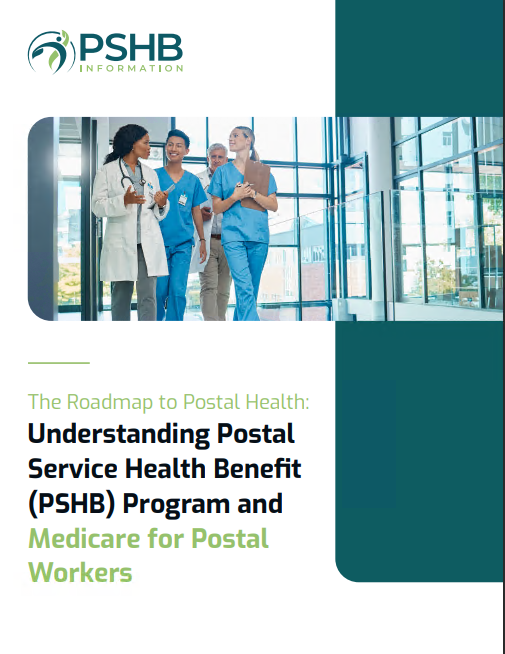Key Takeaways:
- The PSHB program will replace the Federal Employees Health Benefits (FEHB) for postal workers and retirees in 2025.
- Postal retirees may need to make important adjustments to align with the new PSHB requirements.
Will PSHB Bring Changes for Current Retirees? Why Postal Workers Are on Edge as the 2025 Rollout Draws Near
The Postal Service Health Benefits (PSHB) program is set to launch in 2025, marking a significant shift for postal workers and retirees. The move is aimed at providing health benefits tailored specifically for the Postal Service community, transitioning away from the broader Federal Employees Health Benefits (FEHB) program. While this change aims to offer postal employees more tailored benefits, many retirees and employees remain concerned about what these changes could mean for their health coverage. With the rollout drawing closer, postal workers and retirees are looking for clarity on how the new system will impact their existing benefits and retirement plans.What Is the PSHB Program, and How Will It Differ from FEHB?
The PSHB program is a new health benefits system designed exclusively for the U.S. Postal Service (USPS) workforce, differentiating it from the current FEHB program that caters to a broader range of federal employees. As part of the reforms introduced by the Postal Service Reform Act, the PSHB program aims to tailor benefits more closely to postal workers’ specific needs. Unlike the FEHB, which serves multiple federal agencies, the PSHB will be distinct, and enrollees will be required to switch over to the new system by 2025. This transition means that all postal employees and retirees enrolled in FEHB plans must move to PSHB options. However, the impact on retirees could be more profound as they may face requirements like enrolling in Medicare Part B to maintain their health coverage. Such changes create uncertainty, making many postal workers and retirees apprehensive about how these new requirements will alter their existing benefits.Will Retirees Need to Enroll in Medicare Part B?
A significant aspect of the PSHB program rollout is its requirement for Medicare-eligible postal retirees to enroll in Medicare Part B. Previously, enrollment in Medicare Part B was optional for postal retirees, but under PSHB, it will become mandatory for those who are eligible. This change is aimed at reducing overall health care costs by integrating Medicare benefits more efficiently with PSHB coverage. For retirees who are already enrolled in Medicare Part B, the shift may not cause much disruption. However, for those who opted out of Medicare Part B previously, this new mandate could lead to unexpected expenses, as they may need to pay Medicare Part B premiums on top of their existing retirement expenses. The concern among retirees is how these additional costs will fit into their fixed income plans.How Can Retirees Prepare for the Transition?
With the new system only a short time away, postal retirees are advised to start planning ahead to minimize potential disruptions. Those who are nearing Medicare eligibility or have opted out of Medicare Part B should evaluate their options early. The key steps include:- Understanding Medicare Part B Enrollment Requirements: Retirees must determine whether they will need to enroll in Medicare Part B as part of the PSHB transition. Those who choose to delay their enrollment may face penalties, so it’s essential to be proactive.
- Reviewing Current Health Plans: It’s important for retirees to understand how their current FEHB plan compares with the upcoming PSHB options. Retirees should look into what new benefits or requirements the PSHB might introduce and how these changes align with their health needs.
- Consulting Resources and Licensed Insurance Agents: Retirees are encouraged to seek guidance from official resources or licensed insurance agents familiar with the PSHB transition to understand their options fully. Making an informed decision now will help reduce the risk of gaps in coverage during the switch.
What Challenges Might Postal Employees Face with the New PSHB System?
The transition to PSHB is not just about selecting a new health plan; it involves a fundamental shift in how postal employees and retirees manage their health coverage. This shift might present several challenges:- Adjusting to New Enrollment Processes: Postal workers and retirees used to the FEHB system will need to familiarize themselves with the PSHB’s new processes. These adjustments include understanding the enrollment period, requirements for transitioning, and how their current benefits will be affected. Retirees who have been out of the workforce for several years may find these changes particularly complex.
- Potential Increases in Out-of-Pocket Costs: If retirees are required to enroll in Medicare Part B, those who have previously opted out may experience an increase in their monthly health care expenses due to the Medicare premiums. Additionally, any PSHB plans may also involve different deductibles and copay structures than what retirees are currently accustomed to under the FEHB program.
- Navigating Communication Barriers: The USPS and Office of Personnel Management (OPM) will likely issue communications and guidelines for the PSHB transition. Retirees need to stay informed by keeping up with these communications to ensure they understand the steps they need to take.
Are There Benefits to the New PSHB Program?
Despite the concerns and uncertainties, the PSHB program is expected to provide several potential benefits designed specifically for postal workers and retirees:- Tailored Health Plans: By moving away from the one-size-fits-all approach of the FEHB, the PSHB program can offer health plans that better suit the needs of postal employees and retirees, potentially including coverage options and services that are more relevant to their demographic.
- Streamlined Integration with Medicare: For Medicare-eligible retirees, the PSHB plans may offer better integration with Medicare Parts A and B, which could enhance overall coverage. Such integration aims to reduce redundancies in benefits, potentially resulting in lower total costs for retirees who use both programs.
- Support for Long-Term Cost Management: The reform aims to provide more predictable and potentially lower costs for postal retirees in the long term by reducing inefficiencies and optimizing benefits. The hope is that this will lead to better financial stability for retirees in managing their health care expenses.
What Should Retirees Do If They’re Unsure About the Transition?
Given the significant changes, it’s crucial for postal retirees to stay informed and seek guidance. Retirees who are unsure about their next steps should:- Monitor Official USPS and OPM Announcements: Official communications will be the primary source of information for all PSHB-related updates. Staying updated will help retirees understand what actions they need to take and when.
- Consider Consulting a Licensed Insurance Agent: Licensed insurance agents familiar with the postal benefits system can help retirees navigate the complexities of transitioning to PSHB. Agents can provide detailed information and guide retirees on how best to integrate Medicare Part B with their new PSHB plan.
- Evaluate Financial Implications: Retirees should assess the potential financial impact of enrolling in Medicare Part B and how it fits within their retirement budget. Understanding these costs ahead of time will help retirees prepare for any necessary adjustments.
Preparing for the 2025 Rollout: Steps Retirees Can Take Now
While the PSHB rollout is still over a year away, retirees can take proactive steps now to prepare. Key actions include:- Reviewing Medicare Options: Retirees should revisit their decision regarding Medicare Part B, especially if they previously declined it. Considering the new requirement under PSHB, early enrollment could prevent penalties and ensure uninterrupted coverage.
- Staying Engaged with the USPS Community: Engaging with postal retiree networks or organizations can provide valuable insights and support. Such groups may offer workshops, newsletters, or other resources designed to keep retirees informed about the transition.
- Setting Up Financial Safeguards: Evaluating retirement budgets and setting aside funds to cover potential new expenses related to health care will provide more flexibility when the transition takes place. Retirees who take these steps can reduce the likelihood of financial strain when the PSHB changes come into effect.





